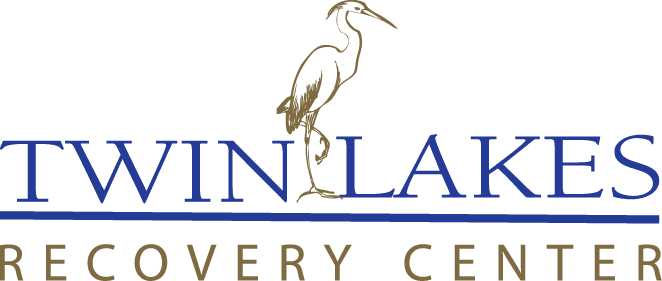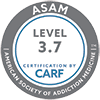Medication-Assisted Treatment at Twin Lakes Recovery Center: What to Expect

Medication-assisted treatment (MAT) is a compassionate, evidence-informed approach that pairs FDA-approved medications with counseling, peer support, and lifestyle change. At Twin Lakes Recovery Center, MAT is used to reduce withdrawal discomfort, stabilize brain chemistry, and create enough breathing room for people to fully engage in therapy and rebuild their lives. It’s not about “replacing one drug with another.” It’s about using carefully selected, clinically monitored medications to quiet the body’s alarm systems so recovery can take root.
How MAT Fits into a Whole-Person Plan
Recovery is more than detox. Early sobriety can come with intense cravings, disrupted sleep, anxiety, and mood swings. MAT helps regulate these symptoms, which can lower the risk of early relapse and improve engagement in therapy. At Twin Lakes Recovery Center, medications are combined with:
- Medical oversight: Prescribers assess history, goals, and safety factors to choose the right medication and dose.
- Therapy and skills-building: Individual and group sessions address triggers, trauma, coping strategies, and relapse prevention.
- Peer and family support: Connection strengthens accountability and reduces isolation.
- Aftercare planning: Ongoing MAT and counseling can continue in outpatient or community settings.
Below are the primary medications you might hear about in an opioid use disorder treatment plan at Twin Lakes Recovery Center—Sublocade, Subutex, Suboxone—and one used for both alcohol and opioid use disorders, Vivitrol.
Sublocade® (Buprenorphine Extended-Release Injection)
What it is: Sublocade is a once-monthly, long-acting form of buprenorphine delivered as a subcutaneous injection. Buprenorphine is a partial opioid agonist, which means it occupies opioid receptors enough to reduce cravings and withdrawal without producing the same level of euphoria or respiratory depression as full opioids.
Why it helps: The monthly injection creates a steady medication level, avoiding the peaks and valleys that can come with daily dosing. For many, this simplifies life—no pills or films to manage, less risk of missed doses, and fewer daily reminders of illness. The continuous receptor coverage can also blunt the effects if someone uses opioids, helping reduce the incentive to return to use.
Who it may fit: Individuals who have stabilized on buprenorphine (often via a short course of daily dosing first) and want a low-maintenance option. It can be especially helpful for people with busy schedules, concerns about medication security at home, or a history of inconsistent daily adherence.
What to know: Because it’s an injection, dosing changes take time to adjust. That makes close collaboration with your medical team important during the first months. Injections happen in a clinic setting, which adds built-in accountability and support.
Subutex® (Buprenorphine)
What it is: Subutex is a sublingual tablet containing buprenorphine alone. Like Sublocade, it’s a partial opioid agonist. It’s typically used in early stabilization, induction (the period when a person transitions from short-acting opioids to buprenorphine), or for individuals who have a clinical reason to avoid naloxone.
Why it helps: By binding strongly to opioid receptors, buprenorphine reduces withdrawal and cravings and can block other opioids from creating strong effects. This “ceiling effect” lowers overdose risk compared to full agonists.
Who it may fit: People starting MAT who need flexible, adjustable dosing under close medical supervision. It’s sometimes selected in specific clinical scenarios, such as during pregnancy, where a prescriber may recommend buprenorphine-only formulations.
What to know: Subutex is usually part of a structured plan, often transitioning to a combination product like Suboxone or to Sublocade once stable. Safe storage is essential.
Suboxone® (Buprenorphine/Naloxone)
What it is: Suboxone combines buprenorphine with naloxone in a sublingual film or tablet. Naloxone is an opioid antagonist included to deter misuse; if taken as directed under the tongue, its absorption is minimal, but if injected, naloxone can precipitate withdrawal.
Why it helps: Daily dosing allows individualized titration—your provider can carefully adjust the dose to manage cravings without oversedation. Many people appreciate the autonomy and routine of a once-daily medication combined with ongoing therapy.
Who it may fit: Individuals who prefer daily self-administration and can reliably store and take medication as prescribed. It’s widely used and well studied, making it a common first-line option.
What to know: Adherence matters. Taking more or less than prescribed can destabilize progress. As recovery solidifies, some people step down doses or transition to extended-release options, guided by their prescriber.
Vivitrol® (Naltrexone Extended-Release Injection)
What it is: Vivitrol is a once-monthly intramuscular injection of naltrexone, a full opioid antagonist. It’s used in the treatment of both alcohol use disorder (AUD) and opioid use disorder (OUD). For OUD, individuals must be fully detoxed from opioids before starting, because naltrexone can precipitate acute withdrawal if opioids are still in the system.
Why it helps: For AUD, naltrexone can lessen the rewarding effects of alcohol and reduce heavy-drinking days. For OUD, it blocks opioid receptors, making opioids less effective and reducing the reward from use. The monthly schedule supports adherence and keeps cravings at bay without daily dosing.
Who it may fit: People who prefer a non-opioid option for OUD, or those focusing on alcohol recovery. It can also be a good fit for individuals who want a clear “blockade” effect as psychological support against impulsive use.
What to know: Because it’s an antagonist, there’s no physical dependence on the medication itself. However, individuals must maintain complete opioid abstinence prior to initiation; your medical team will guide timing and readiness.
Safety, Monitoring, and Support
All MAT at Twin Lakes Recovery Center is paired with careful screening and ongoing monitoring. That includes:
- Medical assessments to evaluate co-occurring conditions, other medications, and safety considerations (e.g., hepatic function for naltrexone).
- Education and consent so you understand benefits, risks, and alternatives.
- Urine drug screening as a clinical tool to inform care, not as punishment.
- Therapy integration that links symptom changes (like fewer cravings) with skills practice and relapse-prevention planning.
- Coordination of care with outpatient providers, primary care, and—when appropriate—family or support people.
Common Questions
Is MAT forever? Not necessarily. Duration is individualized. Some people use medications for months; others for years. The focus is on sustained recovery and quality of life, not an arbitrary clock.
Will MAT affect my sobriety “count”? Recovery communities vary, but at Twin Lakes Recovery Center, using evidence-based medications as prescribed is considered a recovery tool, not a shortcut. Your team can help you navigate community norms while staying anchored in your clinical needs.
What about side effects? Most are manageable and tend to improve as your body adapts. Your provider will review potential effects (like constipation with buprenorphine or injection-site tenderness with long-acting options) and offer strategies to minimize them.
Taking the Next Step
If you’re considering MAT, the best first move is a comprehensive evaluation. You’ll discuss your goals, substance use history, medical background, and daily realities—work, family, transportation, privacy concerns. From there, your care team will recommend a plan that might include Sublocade for steady, low-maintenance coverage; Subutex or Suboxone for flexible daily dosing; or Vivitrol if you prefer a non-opioid or are focusing on alcohol recovery. Whatever the path, Twin Lakes Recovery Center treats MAT as one part of a whole-person blueprint—paired with therapy, community, and practical support—to help you feel well, think clearly, and rebuild a life you want to protect.



